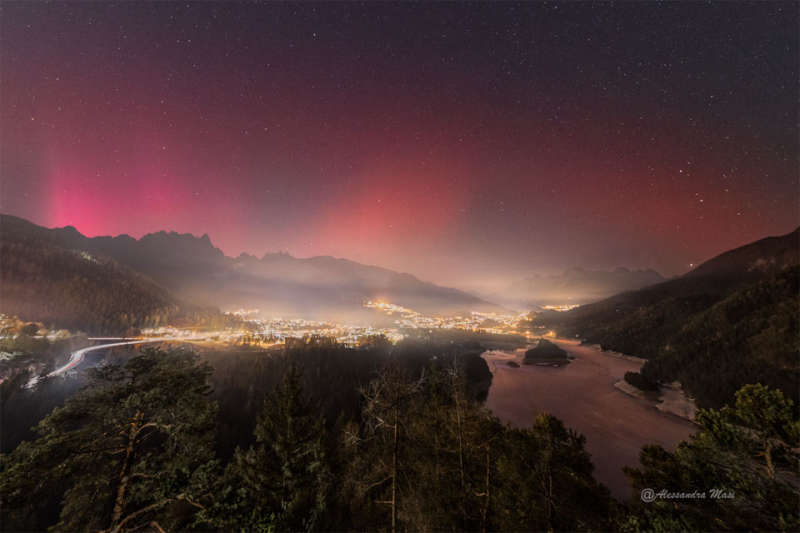
|
Credit & Copyright: Alessandra Masi
Explanation:
It was a new year, and the sky was doubly red.
The new year meant that the
Earth
had returned to its usual place in its orbit on January 1,
a place a few days before its
closest approach to the
Sun.
The first of the two red skyglows, on the left, was a red
aurora,
complete with vertical rays, caused by a
blast from the Sun
pushing charged particles into
Earth's atmosphere.
The second red glow, most prominent on the far right,
was possibly a
SAR
arc caused by a river of charged
particles flowing across
Earth's
atmosphere.
Although both appear red, the
slight color difference is likely due to the aurora being emitted by both oxygen
and nitrogen, whereas the higher
SAR arc was possibly emitted
more purely by atmospheric oxygen.
The
featured image was taken on January 1 from near
Pieve di Cadore in
Italy.
Portal Universe:
Random APOD Generator
|
January February March April May June July August September October November December |
| ||||||||||||||||||||||||||||||||||||||||||||||||
NASA Web Site Statements, Warnings, and Disclaimers
NASA Official: Jay Norris. Specific rights apply.
A service of: LHEA at NASA / GSFC
& Michigan Tech. U.
Based on Astronomy Picture
Of the Day
Publications with keywords: aurora
Publications with words: aurora
See also:
- APOD: 2024 December 8 Á Aurora around Saturns North Pole
- APOD: 2024 October 16 Á Colorful Aurora over New Zealand
- APOD: 2024 October 13 Á Aurora Timelapse Over Italian Alps
- Northern Lights, West Virginia
- Aurora Australis and the International Space Station
- APOD: 2024 June 26 Á Timelapse: Aurora, SAR, and the Milky Way
- APOD: 2024 June 12 Á Aurora over Karkonosze Mountains
